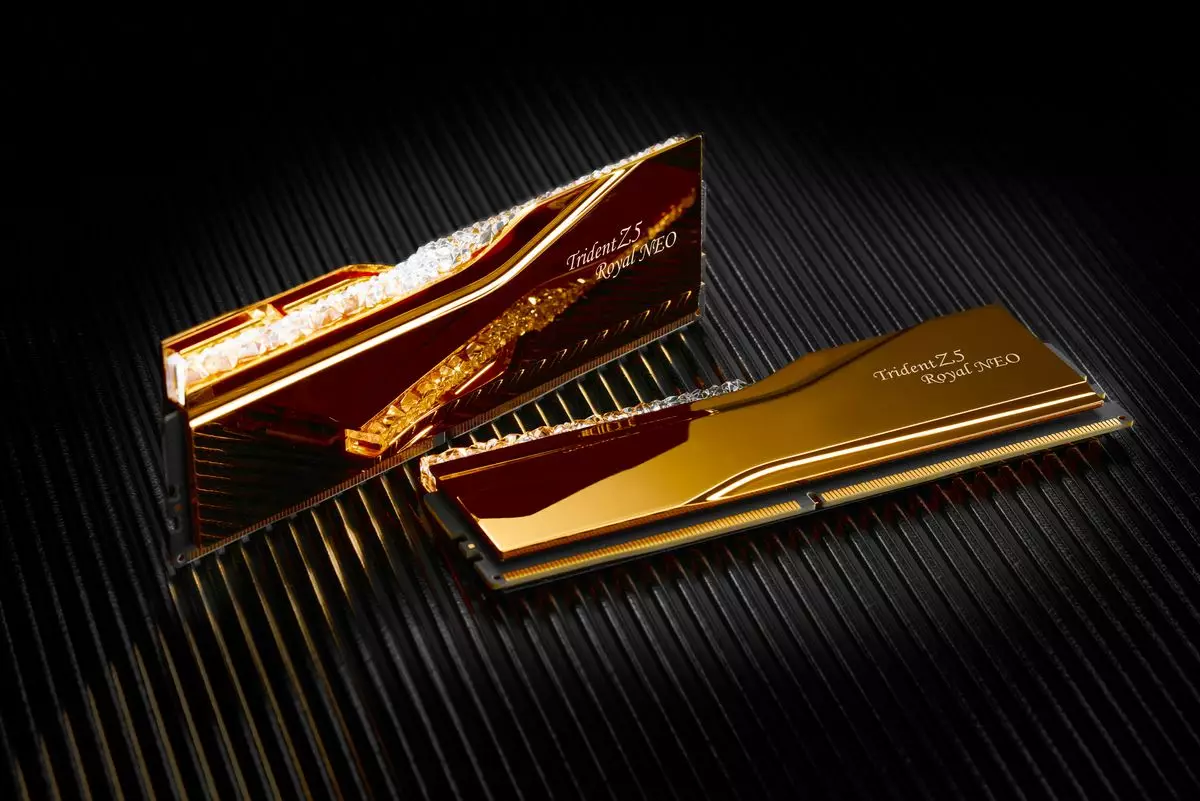As a seasoned PC enthusiast, my preferences usually lean toward a classic and understated aesthetic. This minimalist approach stems not only from personal taste but also from a desire for functionality and efficiency over flamboyance. However, a recent encounter with the G.Skill DDR5-8000 Trident Z5 Royal Neo RAM has compelled me to rethink my standpoint. Adorned in a striking golden hue and embellished with diamond-like accents, these RAM sticks evoke a certain allure reminiscent of the cyberpunk aesthetic seen in hit titles like Cyberpunk 2077. If sleek lines and monochrome color schemes make for a traditional rig, then could it be time to embrace a bit of sparkle?
The evolution of RAM technology has been astonishing. The G.Skill DDR5-8000 kit’s claims of being the first DDR5 64 GB modules to reach such blistering speeds are not just audacious; they highlight a transformative shift in how we view computing power. With this leap in capacity and speed, the conversation around high-capacity, high-speed RAM is no longer just for specialists in AI research or 3D modeling; it beckons to gamers who want to future-proof their systems against the ever-increasing demands of modern gaming.
Performance vs. Aesthetic: A Juxtaposition of Values
As we debate the merits of flashy builds versus utilitarian designs, it raises an essential question: do we sacrifice personal expression for performance? There’s a certain pride in crafting a PC that not only serves its function but also stands as a canvas for self-expression. If the G.Skill DDR5-8000 RAM can defy my initial prejudices, perhaps it signifies a more significant trend within the tech community—a movement towards embracing vibrant design elements without compromising on the core attributes of performance and reliability.
The technical specs of the DDR5-8000 modules are impressive. Previously, RAM modules capable of such extreme speeds were generally limited to lower capacities, forcing users to make compromises. The introduction of these 64 GB modules fundamentally changes our approach to RAM; it brings power-hungry gaming enthusiasts and professional creators closer together. Consider how much RAM you would need for contemporary games that push hardware boundaries. With a staggering 128 GB capacity available, the first thought might be a raised eyebrow, but for developers, content creators, and cutting-edge gamers, this opens up a realm of possibilities.
The Digital Canvas: Crafting a Showstopper Rig
Should we delve deeper into this conversation on aesthetics, we mustn’t ignore the potential for hybridity in PC design. Picture this: a high-end gaming rig featuring the G.Skill DDR5-8000 RAM matched with the gleaming gold RTX 5090 graphics card. A build like this is not just about performance; it’s an eye-catching statement in an era where every gamer wants their hardware to reflect their unique identity. This kind of integration raises other questions: what does it mean to be a gamer in a world dominated by increasingly extravagant aesthetics? Are we merely playing games, or are we contributing to an art form?
Popularity aside, the financial implications of such luxe components cannot be ignored. Though specifics may not yet be available, one can wager that the price point will match the higher caliber of technology and design. Given the standard affordability of regular DDR5 RAM today, it raises a valid concern: in a world with an unstable economy, should we be investing resources into components that exemplify luxury over necessity? Yet this dilemma is intrinsic to the nature of passion-driven hobbies—sometimes, it’s about spending money on what ignites joy, irrespective of practicality.
The Time to Embrace and Innovate
Still, many enthusiasts wonder whether such opulence can coexist with the prevailing economic conditions. The notion of pairing a flashy G.Skill RAM and an equally flamboyant graphics card in one’s rig feels at odds with the sobering realities of budgeting. However, in a tech landscape defined by breakthrough advancements, perhaps it’s okay to momentarily set aside the concerns and indulge in the possibility of truly outstanding technology.
The concept of over-the-top personalization in gaming builds could signify a maturation of the enthusiast community—a celebration of technology that is not only functional but incredibly stylish. In embracing both form and function, we are defining a new frontier in PC building. After all, what’s better than creating a powerhouse that captures attention even as it crushes every gaming title on the market? It’s time to consider the full range of possibilities—style, performance, and innovation combined into one triumphant package.

